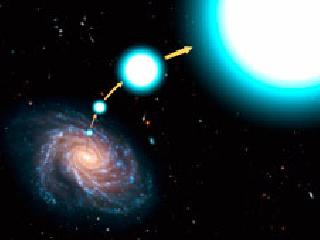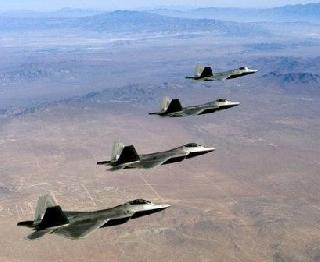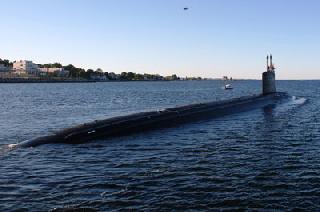
An artist's conception of the blue hot star. A NASA/ESA photo
WASHINGTON (BNS): NASA's Hubble Space Telescope has captured a 'hypervelocity' star travelling in a trailblazing speed in space, and is believed to have been ejected from the Milky Way.
The star, known as HE 0437-5439, one of the fastest ever detected so far, is moving at a speed of 2.5 million kilometers an hour, around three times faster than Sun's orbital velocity in the Milky Way.
Scientists believe the star was originally a part of a triple-star system. While travelling through the bustling centre of the Milky Way, the trio wandered too close to the galaxy's black hole, which captured one of the stars and hurled the other two out of the galaxy.
The two outbound stars then emerged to form a super-hot, blue star.
The star acquired its blue colour and swift speed because it was part of a triple-star system that was involved in a gravitational billiard-ball game with the galaxy's monster black hole, believe astronomers after analysis the new Hubble images.
Since 2005, 16 hypervelocity stars have been discovered – all thought to be exiles from the heart of Milky Way. The Hubble-captured HE 0437-5439, however, is the first direct observation linking a high-flying star to a galactic centre origin, NASA said.
“The star is traveling at an absurd velocity, twice as much as the star needs to escape the galaxy's gravitational field. There is no star that travels that quickly under normal circumstances - something exotic has to happen,” said astronomer Warren Brown, a member of the Hubble team that observed the star.
While calculating the star’s age, astronomers have found another oddity. Based on its speed and position, the star would have to be 100 million years old to have journeyed from the Milky Way's core. Yet its mass – nine times that of our Sun – and blue colour mean that it should have burned out after only 20 million years – far shorter than the transit time it took to get to its current location.
The new discovery is expected to help scientists find clues about the nature of some of the Universe's unseen mass and understand how galaxies form.
 Previous Article
Previous Article Next Article
Next Article











The Indian Air Force, in its flight trials evaluation report submitted before the Defence Ministry l..
view articleAn insight into the Medium Multi-Role Combat Aircraft competition...
view articleSky enthusiasts can now spot the International Space Station (ISS) commanded by Indian-American astr..
view article